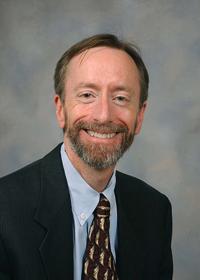Tucson’s economy is expected to gather a little steam this year heading into 2018, roughly matching the nation’s growth but still lagging the state, University of Arizona’s top research economist said Wednesday.
And nationally, economic growth is expected to pick up after a lackluster first quarter, a visiting economist from the Federal Reserve Bank said during a UA Eller College of Management breakfast at the Westin La Paloma Resort & Spa.
UA economist George Hammond, director of Eller’s Economic and Business Research Center, said Arizona and Tucson are poised for growth, citing accelerating job gains last year, signs of wage growth in a tightening labor market and a slowly improving residential real-estate market.
Tucson-area non-farm employment rose 1.3 percent in 2016, up from just 0.8 percent in 2015 and 0.7 percent in 2014.
Tucson is forecast to add 5,400 jobs in 2017 and 7,200 jobs in 2018, with the aerospace sector expected to add high-paying jobs that will contribute to faster income growth and higher incomes, he said.
“I think Tucson has some room to run here,” he told a crowd of about 450 at a breakfast event sponsored by JP Morgan Chase.
Hammond noted that while Tucson’s job growth was expected to ramp up in 2017, initial first-quarter figures were weak.
The Tucson metropolitan area, comprised of Pima County, added just 1,700 jobs over the year in the first quarter for a year-over-year growth rate of just 0.5 percent.
But Hammond cautioned that those numbers are based on preliminary data and losses shown in the professional and business services sector are unusual, adding that he’ll be closely watching the final, revised numbers.
Tightening labor markets, coupled with a higher minimum wage, are expected to boost personal income from 3 percent in 2016 to 4.1 percent in 2017, and then to 5 percent in 2018.
But the job gains may depend on the effect of any new Trump administration policies on trade, immigration and tax reform, Hammond said.
An optimistic scenario for the Tucson job market, he said, shows job-growth rates rising above 2 percent until about 2019, before declining and leveling off around 2022 as the market becomes hard-pressed to keep up with accelerating baby boomer retirements.
A pessimistic scenario: New government policies cause business investment and exports to plunge and erode consumer confidence, dragging down the economy by mid-2018 and resulting in net job losses in Tucson by 2019.
As it is, through March, Tucson had replaced only about 60 percent of the jobs lost during the Great Recession from late 2007 to mid-2009, while Arizona has replaced 132 percent and the U.S. has supplanted 185 percent.
Hammond doesn’t see Tucson replacing all of the jobs lost during the recession until sometime next year.
Exports remain a concern as the dollar continues to remain strong against the Mexican peso, crimping not only direct exports but “travel exports” — Mexicans spending money across the border — as well.
Hammond says he expects the dollar to remain steady for a year or so and then ease.
“We just need to hold here for a bit, and we’ll see that pressure decline,” he said.
NATIONAL OUTLOOK
Gary Wagner, vice president and senior regional officer for the Federal Reserve bank of Cleveland, told the Eller crowd that he expects the nation’s gross domestic product — a key indicator of economic growth — to grow in the near term.
He cited a median reading of professional economic forecasters of 3.1 percent growth in real GDP in the second quarter, followed by quarterly growth of about 2.5 percent through mid-2018, after weaker than expected first quarter growth of 1.2 percent.
Weak business investment amid the uncertain political climate and the strong dollar were a drag on the economy in the first quarter, Wagner said.
But Wagner said he’s upbeat about the near-term outlook because of strong consumer household finances and decade-high consumer and small-business confidence.
“We have yet to see that translate into increased economic activity,” he said, noting that his views were his own and not the Fed’s. “The upside risk looks very favorable, but we’re looking for signs of tangible growth.”
Job-market conditions are now better nationally than before the Great Recession, though states with large employment in the energy sector are seeing losses, Wagner said.
Wage growth has lagged, with some economists citing anemic productivity gains in the first quarter, Wagner said, but such figures are often revised higher.
Inflation is expected to rise but is expected to remain tame, with most market observers expecting an increase of between 1.5 percent and 2.2 percent, Wagner noted.
The Fed’s Open Market Committee has indicated it will raise interest rates two more times this year, after an increase in March, but most economists expect only one additional increase, Wagner said.





